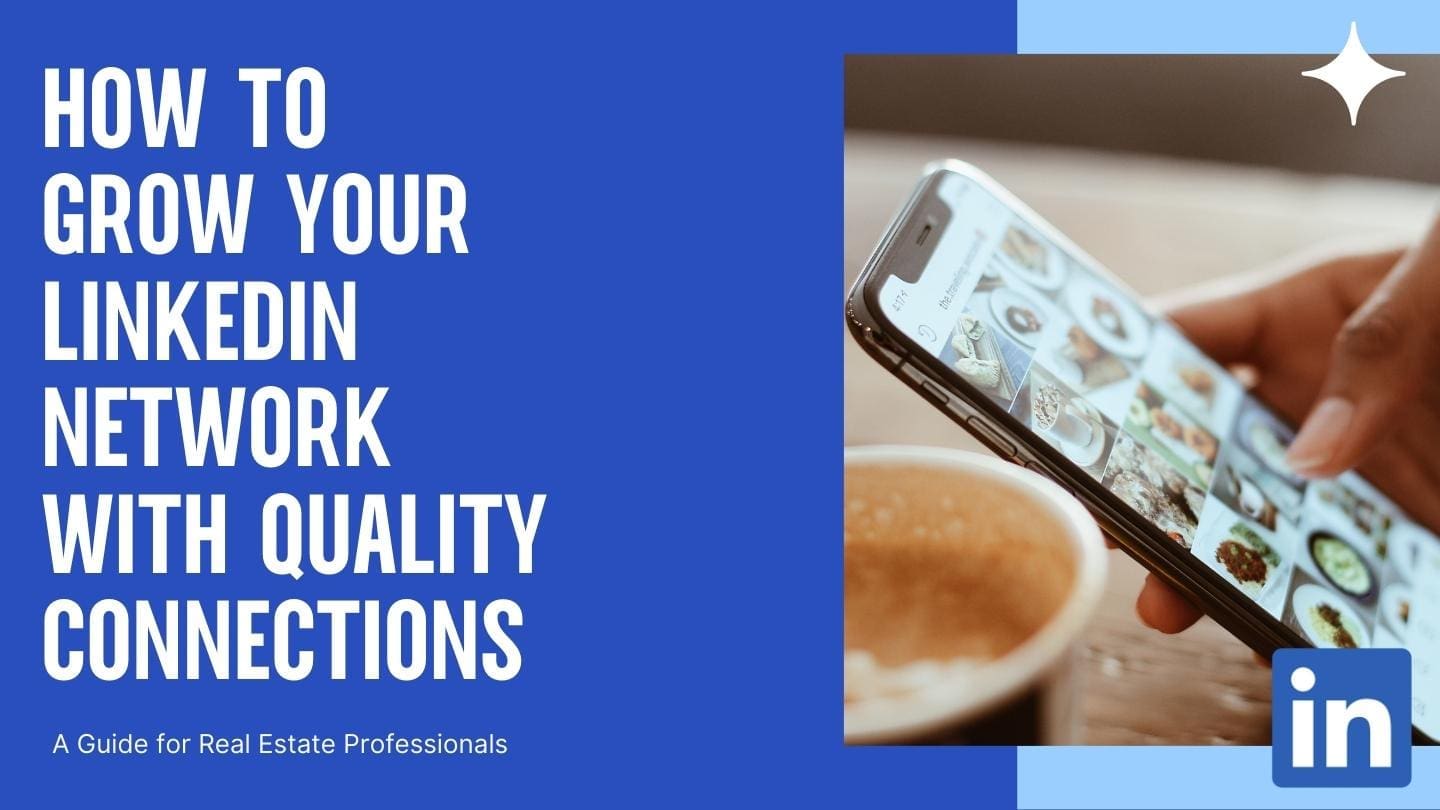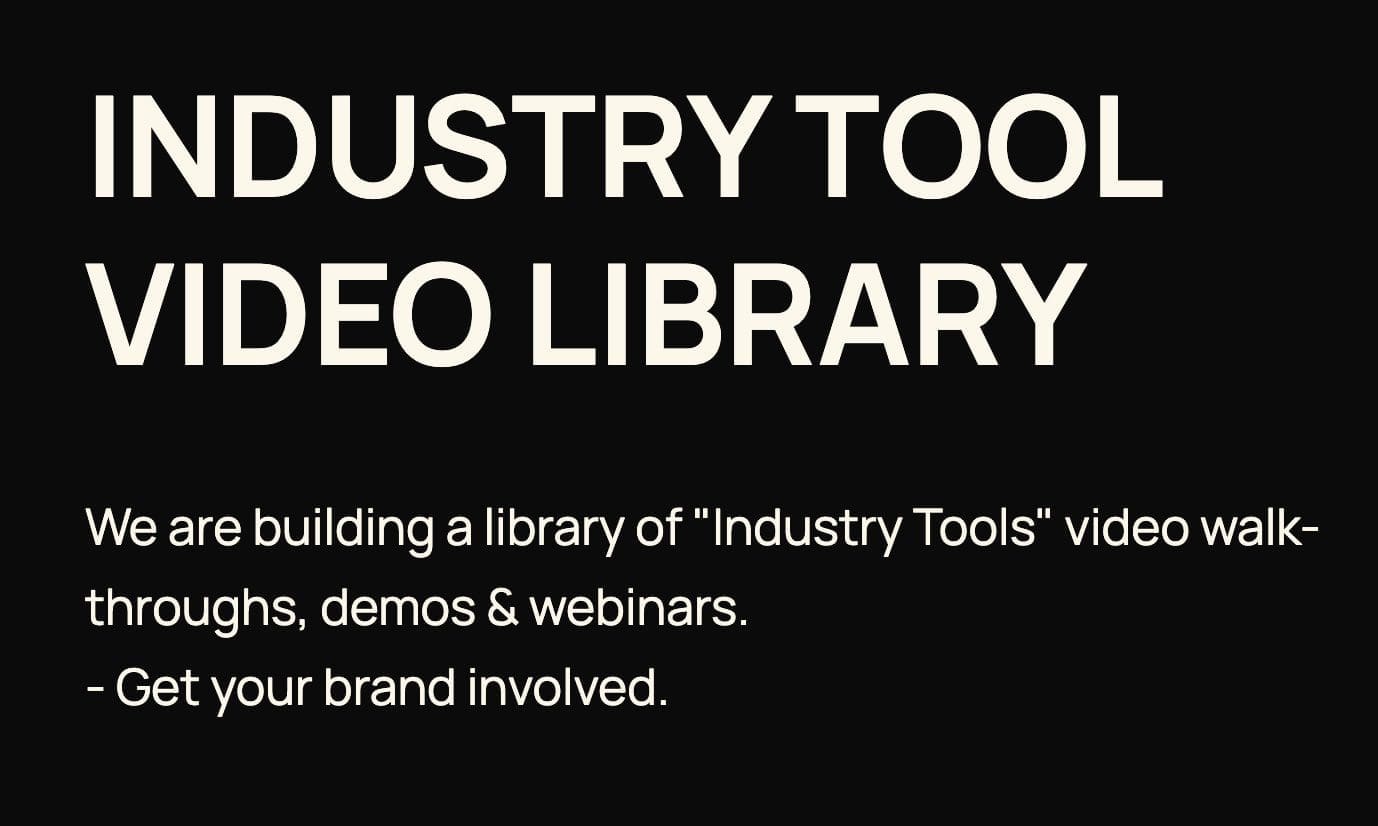AI Learning Centres:
- AI – Learn The Basics
- Get The Most From ChatGPT
- Branding in The Age of AI
- AI for Client Experience
- AI For Prospecting
- AI For Marketing
- AI For Listings & Ads
- Team Adoption of AI
- AI For PM
- AIO & Generative Search
- AI For Operations & Efficiency
- AI For Market Research & Analysis
- AI Ethics, Privacy & Compliance in Real Estate
Digital Marketing & Social Media Learning Centres:
Guides & Downloads

How to Grow Your LinkedIn Network with Quality Connections
LinkedIn is no longer just a digital resume. For real estate professionals it is one of the most powerful platforms for building authority, showcasing expertise, and connecting with people who can grow your business. Yet many agents make the mistake of chasing numbers instead of building quality relationships. A large network filled with strangers is not nearly as valuable as a smaller, engaged community that actually knows, likes, and trusts you.
This guide will walk you step by step through how to grow your LinkedIn network with quality connections that matter in real estate.
Why Quality Connections Matter
On LinkedIn, it is tempting to send out hundreds of random connection requests. While this may increase your numbers, it does not increase your influence or results. Real estate thrives on trust and relationships, and LinkedIn works the same way.
Quality connections matter because they:
Increase the chances of engagement with your posts
Lead to meaningful conversations and referrals
Build a professional reputation in your local market
Help you attract the right clients, not just more names on a list
A connection who is genuinely interested in property, investment, or your community is far more valuable than ten who never read your updates.
Step 1: Optimise Your LinkedIn Profile
Before reaching out to anyone, your LinkedIn profile must be ready. Think of it as your digital shopfront. If your profile is incomplete or unclear, potential connections will not take you seriously.
Key things to include:
Professional photo: A clear, friendly headshot.
Headline: Not just your job title. Instead, highlight the value you bring. Example: “Helping families and investors find the right property in Brisbane.”
About section: A short, engaging summary of who you are, what you do, and why people should connect with you. Keep it simple and people-focused.
Experience: List your roles, achievements, and any special areas of expertise.
Featured content: Add property videos, community updates, or a market report.
A well-crafted profile builds trust before you even send a connection request.
Step 2: Identify the Right People to Connect With
Growing your network is not about connecting with everyone. It is about finding people who are most likely to add value to your career and business.
For real estate professionals, the following groups are especially important:
Local homeowners and buyers in your community
Investors who focus on your city or region
Other real estate professionals such as agents, brokers, and property managers
Industry partners like mortgage brokers, conveyancers, builders, and interior designers
Community leaders such as local business owners and councillors
Media professionals who cover property or local news
When you focus on the right people, your network becomes a source of genuine opportunities rather than a meaningless collection of names.
Step 3: Personalise Every Connection Request
The biggest mistake agents make on LinkedIn is sending the default “I’d like to connect” message. People ignore these because they feel impersonal.
Instead, write a short, friendly note when sending your request. Mention how you know them or why you would like to connect. For example:
“Hi Sarah, I noticed we are both active in the Sunshine Coast property market. I’d love to connect and share insights.”
“Hi James, I saw your article about investment trends in Brisbane. I found it very useful and would like to connect.”
A personalised message shows respect and increases your chances of being accepted.
Step 4: Engage With Your Network Regularly
Simply collecting connections is not enough. The value comes from staying visible and active.
Ways to engage include:
Commenting on posts from your network with thoughtful feedback
Liking and sharing useful content, especially if it relates to your community
Congratulating people on milestones such as work anniversaries or promotions
Sending private messages to check in or share useful information
Engagement shows that you are present and genuinely interested in others. Over time, this leads to stronger trust and more meaningful conversations.
Step 5: Share Content That Provides Value
People connect with those who educate, inspire, or entertain them. As a real estate professional, you have endless opportunities to share useful content.
Ideas include:
Local market updates and property insights
Tips for first-home buyers or investors
Short videos of new listings or neighbourhood highlights
Behind-the-scenes posts showing your daily work
Client success stories (with permission)
Community news such as new cafes or schools opening
The key is consistency. A steady stream of useful posts keeps you visible and reinforces your expertise.
Step 6: Use LinkedIn Groups and Events
LinkedIn groups and events are excellent ways to meet new people with shared interests.
Join groups related to real estate, investment, or your local community.
Participate in discussions by answering questions and offering advice.
Create your own event, such as a free online session about the property market in your area.
Groups and events allow you to connect naturally with people who are already interested in property or your local market.
Step 7: Balance Growth With Quality
It is important to remember that growing your network should not be rushed. Quality takes time.
Tips to maintain balance:
Send only a few connection requests per day
Review your network every few months and remove connections that are irrelevant or inactive
Avoid connecting with people you do not trust or who seem spammy
Focus on building long-term relationships, not just chasing numbers
LinkedIn rewards meaningful engagement, not sheer size of network.
Step 8: Blend AI With Your Networking Strategy
AI tools such as ChatGPT can make networking easier and more effective, but they should support, not replace, your human touch.
Practical uses for AI:
Drafting personalised connection messages quickly
Suggesting engaging comments for other people’s posts
Creating a posting calendar so your content is consistent
Generating ideas for market updates, community news, or buyer tips
Helping you prepare professional replies to messages
By blending AI with your personal efforts, you save time while keeping your communication authentic and human.
Step 9: Track Your Progress
To make sure your efforts are paying off, measure your LinkedIn activity. Key things to track include:
Connection acceptance rate: Are people accepting your requests?
Engagement rate: How many likes, comments, and shares do your posts receive?
Profile views: Are more people checking your profile?
Leads generated: Have you had inquiries or referrals from LinkedIn?
These measures help you adjust your strategy and focus on what works.
Step 10: Stay Consistent
The greatest results come from consistency. Spending just 15 to 20 minutes per day on LinkedIn can make a major difference.
Daily habits might include:
Sending one personalised connection request
Commenting on two posts
Posting once or twice per week
Messaging one person to check in
Over time, these small actions compound into a strong, valuable network.
Final Thoughts
LinkedIn is one of the most underused tools in real estate, yet it has enormous potential. By focusing on quality over quantity, personalising your outreach, and staying consistent, you can build a network that drives genuine opportunities.
Remember, every property transaction begins with a conversation. LinkedIn is where many of those conversations can start if you use it with care. Grow your network with intention, and it will become one of your most powerful assets in real estate.
Checklist: How to Grow Your LinkedIn Network with Quality Connections
Step 1: Prepare Your Profile
Upload a professional, friendly headshot
Write a clear headline that explains the value you provide (not just your job title)
Add an engaging About section that explains who you are, what you do, and who you help
List your roles, achievements, and expertise in the Experience section
Feature content such as property videos, community news, or market reports
Step 2: Find the Right People
Local homeowners and buyers in your community
Property investors with interest in your city or region
Other real estate professionals (agents, property managers, brokers)
Industry partners (mortgage brokers, conveyancers, builders, designers)
Local business leaders and community influencers
Media professionals who cover property or local news
Step 3: Send Personalised Requests
Always write a short, personal note with each request
Mention how you know them or why you want to connect
Avoid sending the default LinkedIn message
Step 4: Engage Consistently
Comment on at least 2 posts each day
Like and share valuable updates
Congratulate connections on milestones
Send private messages to stay in touch
Step 5: Share Value-Driven Content
Market updates and property insights
Buyer or investor tips
Videos of listings and neighbourhood features
Client success stories (with permission)
Community updates (new schools, cafes, developments)
Behind-the-scenes glimpses of your work
Step 6: Use Groups and Events
Join 2–3 real estate, investment, or local community groups
Participate in discussions regularly
Host or attend LinkedIn events related to property
Step 7: Blend AI Support
Use AI tools to help draft personalised connection messages
Use AI to create a posting calendar for consistent content
Ask AI for content ideas such as buyer tips or suburb insights
Use AI for professional responses, but always add a personal touch
Step 8: Track Progress
Monitor your connection acceptance rate
Check engagement on your posts (likes, shares, comments)
Review your profile views weekly
Track inquiries or referrals that came directly from LinkedIn
Step 9: Build Daily Habits
Spend 15–20 minutes each day on LinkedIn
Send 1 personalised connection request
Comment on 2 posts
Post once or twice a week
Message 1 person to reconnect or provide value
✅ Final Tip: Quality beats quantity. Focus on meaningful, professional relationships that can lead to referrals, opportunities, and long-term trust.






